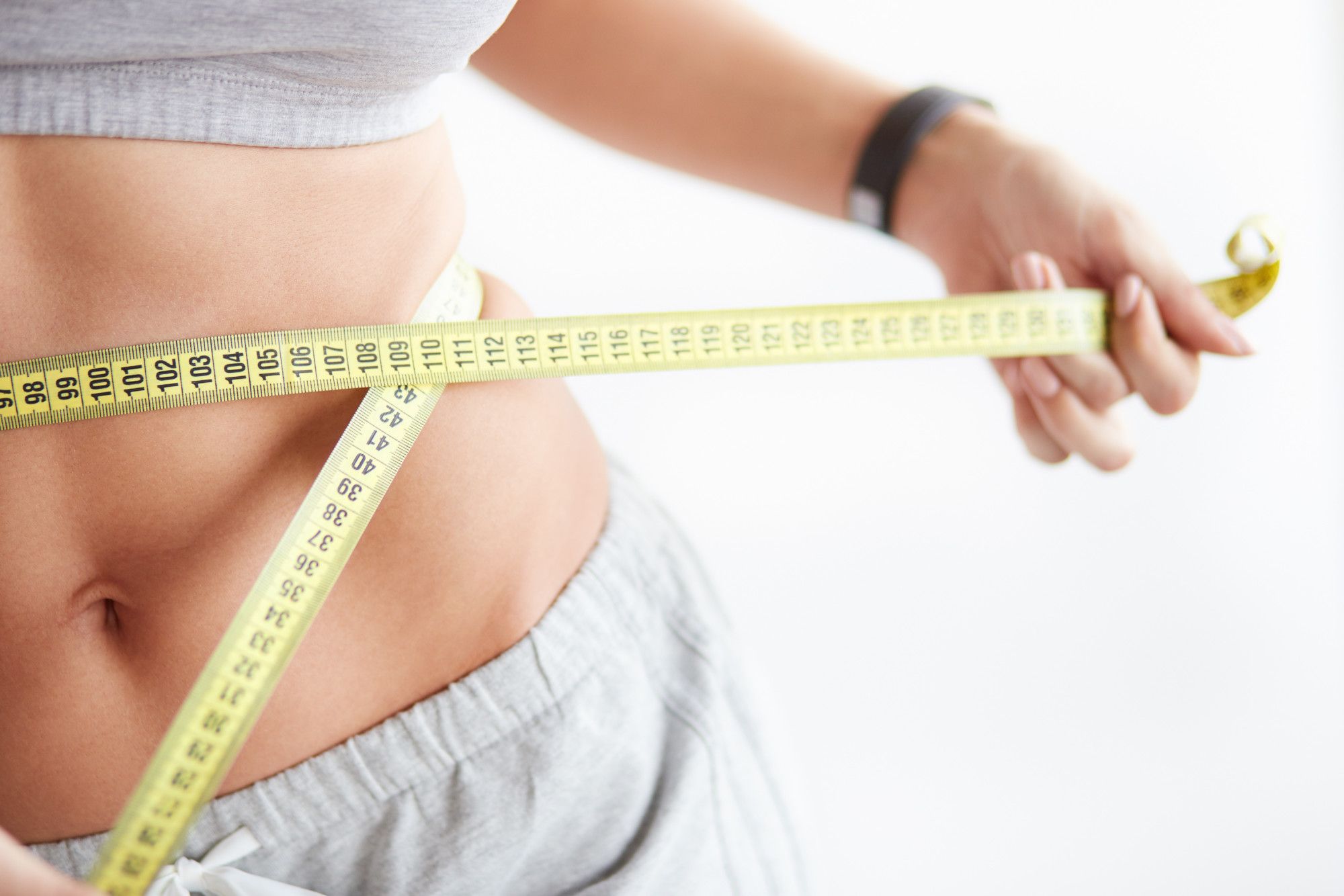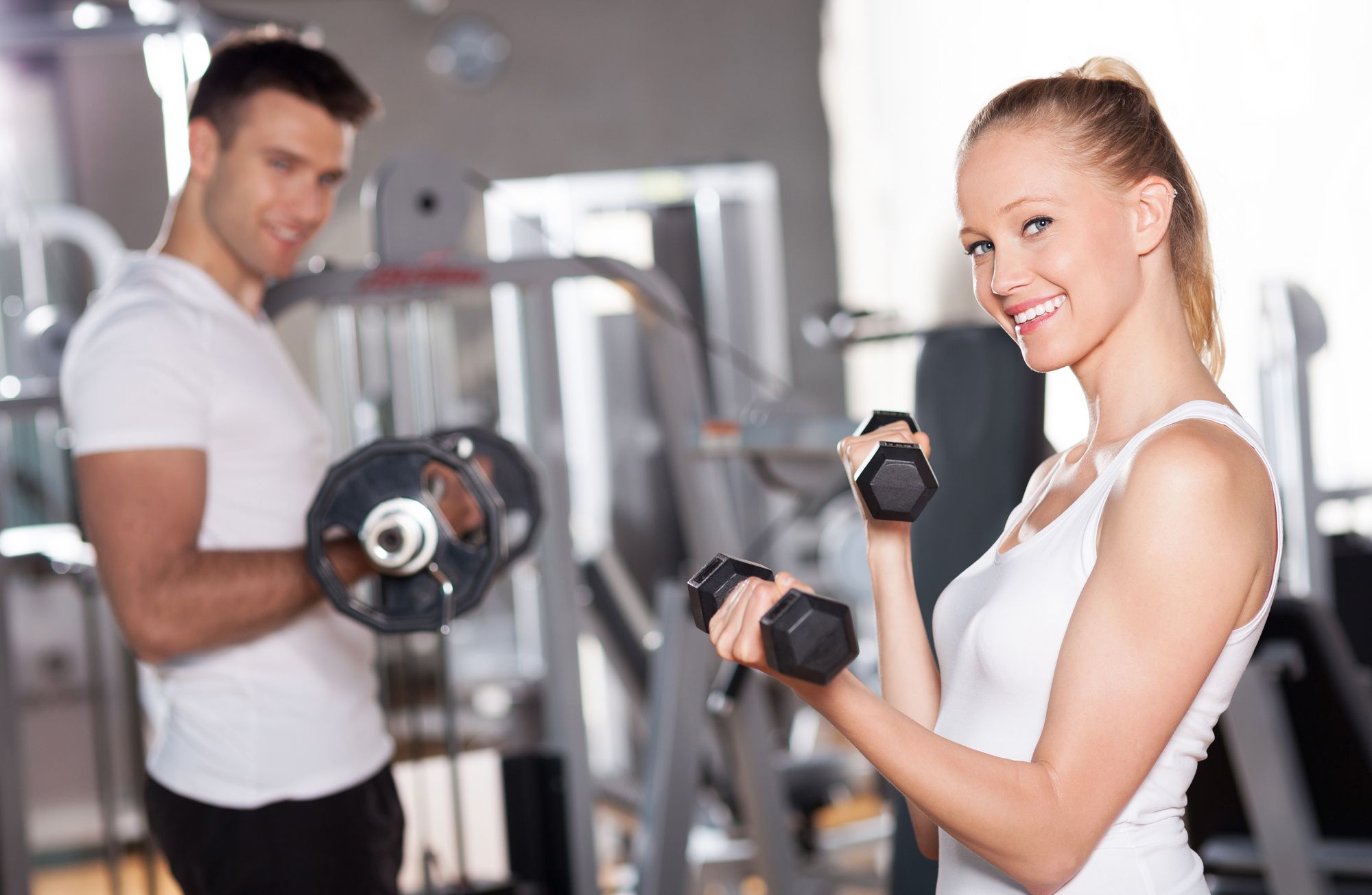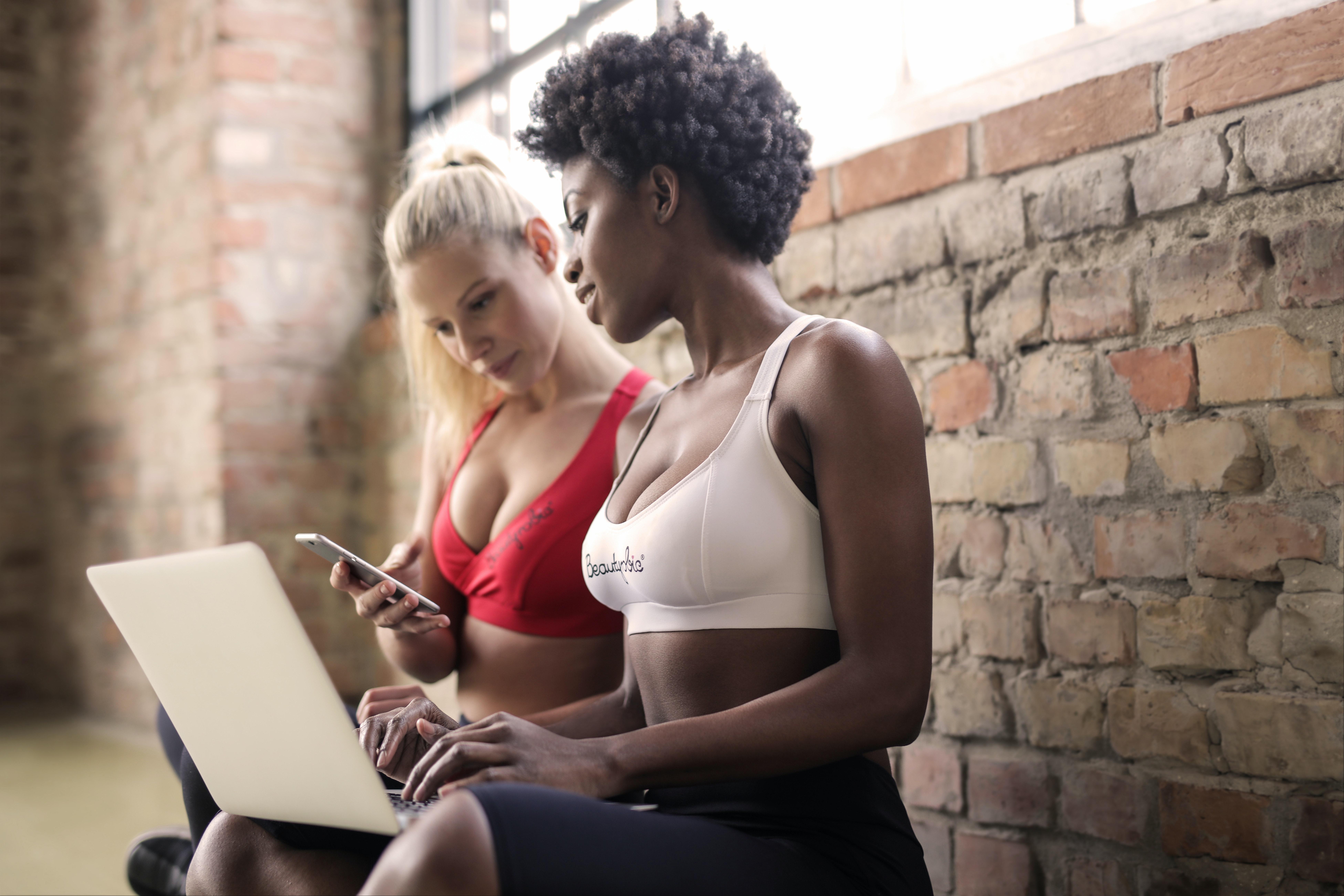One of the best ways to have honest and productive conversations about a client's overall health is to show them an analysis of their body composition. This analysis determines how much of their body is fat and how much is muscle. The results of these analyses can be used to create personalized fitness plans that drive the results that your clients want to see.
But how do you go about acquiring a body composition analysis? The two most popular and effective tools to do this are body fat calipers and 3D body scanners.
The battle of 3D body scanners vs. body fat calipers can be a tricky one to wade through. But once you understand what each instrument actually is, how they work, and the pros and cons of each, you can make an informed decision about which instrument is right for your gym.
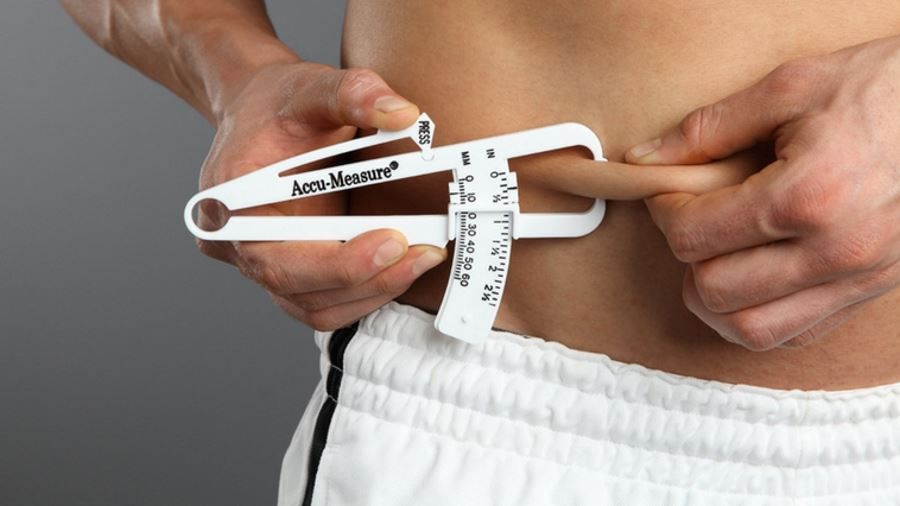
What Are Body Fat Calipers?
A body fat caliper, or skinfold caliper, is a device that measures the thickness of subcutaneous fat. That's the fat that lays just beneath the skin.
Measurements are taken at three to seven sites on the body. The three-site method is the most popular. These sites differ slightly between men and women.
For a three-site measurement in women, measurements are taken at the triceps, suprailiac (also called the iliac crest), and the front of the thigh. For a seven-site measurement, the chest, areas near the armpit, and areas beneath the shoulder blade are also measured.
For a three-site measurement in men, measurements are taken at the chest, abdomen, and front thigh. For a seven-site measurement, additional measurements are taken at the triceps, the areas beneath the scapula, the areas near the armpit, and the areas beneath the shoulder blade.
After the measurements are taken, the results are plugged into an equation or calculator. The final read-out provides a relatively accurate estimate of an individual's total amount of body fat.
This process must be completed by a trained professional in order to ensure accuracy. There are many variables that come into play when taking skinfold measurements. The person administering the test must know how to do it properly.
Pros
Using body fat calipers offers people a much better assessment of their overall health than a scale or BMI results. They are also a very reliable way of measuring body fat change over time.
This is incredibly useful for people who are embarking on fitness journies and need to see numerical results of their efforts. If a trainer can show someone that their body fat numbers are going down, they will be more motivated to continue working out.
Measuring the thickness of subcutaneous fat is particularly useful for bodybuilders and people who are exercising to achieve a particular body image. Fat that lies directly beneath the skin is typically the type that people want to trim down.
Skinfold calipers are also relatively inexpensive and portable. They typically cost between $100 and $500, depending on the model.
Cons
Body fat calipers only measure an individual's subcutaneous fat. They are not able to provide a total assessment of their body composition.
What's more, they are only able to make a prediction of body fat. This prediction heavily relies on the person's age. The three-site Jackson-Pollock Equation makes inherent assumptions about the effect age may have on body density.
Body fat calipers' accuracy also has a 5% error rate. The results are heavily influenced by the person administering the readings. That person must be extremely precise when taking the measurements
Each measurement site must be located exactly and marked with an X to ensure proper jaw placement. You can't eyeball the location. The person administering the test must use a tape measurer to locate each site.
This is only the first hurdle. There are also variances between how the jaws of the caliper must be placed on each skinfold.
For example, when pinching the shoulder blade site, the upper jaw must be placed directly on the X mark. With the tricep pinch, both jaws must be placed on either side of the X. These differences may seem small, but they can drastically affect the final results.
The CDC's guidelines for using body fat calipers specify that readings can only be taken after pinching the skin, holding it, and waiting three seconds. If the person administering the test doesn't follow these guidelines exactly, it can further skew the results.
Caliper equations also make a lot of assumptions about body fat distribution. Particularly, how much of the body fat is made up of subcutaneous fat and how much is comprised of visceral fat (the fat that lies between your abdominal organs).
With the rise in obesity, these assumptions have become increasingly inaccurate. This is particularly true for people who are overweight.
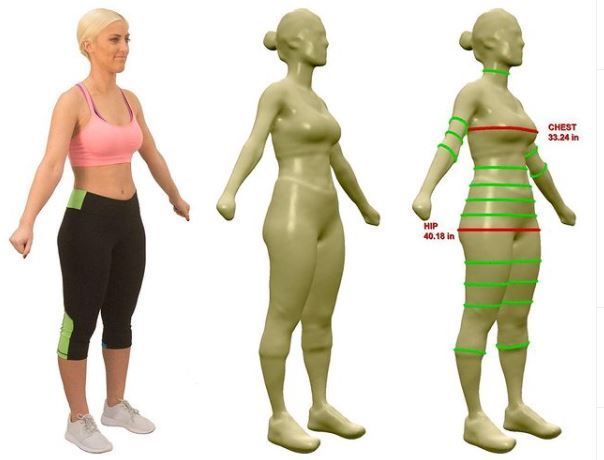
What Are 3D Body Scanners?
As the name would suggest, 3D body scanners are a new technology that scan's a person's entire body in a 360-degree view. It uses those scans to create a complete 3D image of the person. This image is used to analyze their body composition.
To use a 3D body scanner, a person steps on the rotating plate and holds still for 35-45 seconds. The body scanner uses digital tape measures to record body mass and measure body fat composition.
The scanner creates a 3D avatar of the person that they can use to see their exact measurements. It also displays metrics such as body fat percentage and lean muscle mass. These readings are used to create a targeted workout and diet plan.
Repeated body scans allow clients to see their physical development in real-time. It analyzes the body's entire composition to provide a holistic look at a person's physical health.
Pros
A 3D body scanner's accuracy is significantly higher than that of body fat calipers. They can calculate total body composition with an error rate of only .5%. This is drastically lower than skinfold calipers' rate of error.
Body scanners are also significantly less invasive than body fat calipers. To have an assessment done with calipers, clients have to strip down to their underwear and let a professional circle their body and pinch skinfolds. For customers who are self-conscious about their bodies, this can be an incredibly intimidating process.
3D body scanners can be used without clients stripping down. Form-fitting clothing works best for accuracy and helps customers feel more comfortable with the process.
Our body scanners also have a self-scanning mode. This allows clients to scan themselves without a professional in the room with them. It allows an extra level of privacy for those who desire it.
Once the scan has been completed, the client is then presented with an interactive 3D representation of their body. Coaches can rotate, pan, and zoom to view the body from any angle. This is a more engaging and visual tool to use when having conversations with clients about their fitness.
Body scanners also tell users the exact type and location of their body fat. The system can illustrate how fitness and nutrition programs impact their overall body composition. Trainers can use these results to build customized workout and nutrition plans to target specific areas where body fat is present.
Our body scanners are also lightweight and portable. You can pack them up and take them to other locations. This frees you from the restriction of operating in a single facility and allows you to perform fitness assessments wherever you want.
Cons
When it comes to body scanner pros and cons, the price point tends to be the biggest issue for fitness center owners. 3D body scanners can be a costly investment. It's up to you to decide whether that investment is worth it for your fitness center.
Many gym owners chose to charge clients for body scans. Typically, the options are to have a body scan done individually, or have it included in a personal training package. The price can turn some clients away, particularly those who don't want to spend more than they have to at the gym.
Analyzing the readout of a body scanner also requires training. You need a coach who understands what the numbers mean and how to communicate the scanner's information to your clients. Fortunately, this training is typically very intuitive and easy to complete.
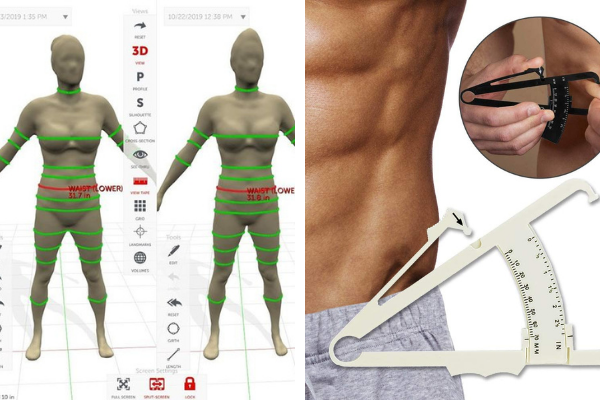
3D Body Scanners vs. Body Fat Calipers
If you are looking to provide body composition analyses to your clients, 3D body scanners or body fat calipers are the two best options.
Skinfold calipers are a less expensive option but rely heavily on outdated assumptions to make their equations work. They must also be operated with extreme precision in order to ensure accurate results.
3D body scanners come at a significantly higher price point but are much more accurate than body fat calipers. They provide a more interactive and holistic look at an individual's overall body composition. The results of 3D body scans can also be used to customize fitness plans for your clients.
In the battle of 3D body scanners vs. body fat calipers, you're the one who gets to decide the victor. At the end of the day, you have to make the decision about which instrument is right for your fitness club.
Now that you know how each instrument works, as well as the pros and cons of each, you can make the best and most informed decision for your gym. For more tips on running your fitness center, check out some of our other articles today.


